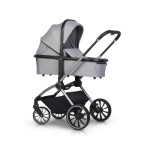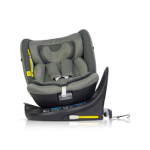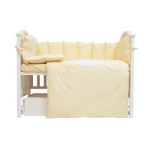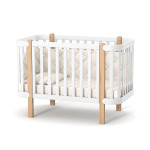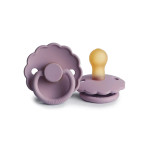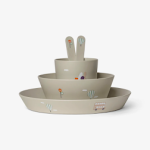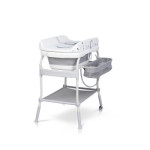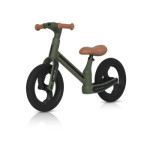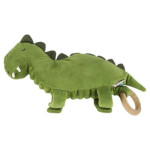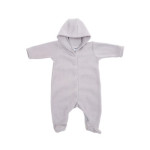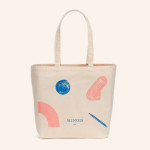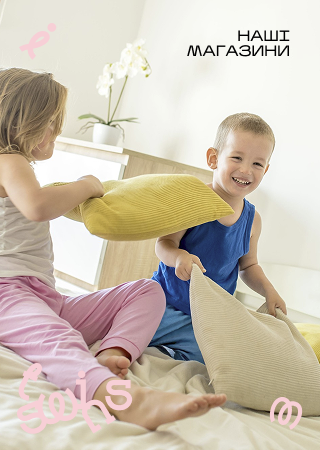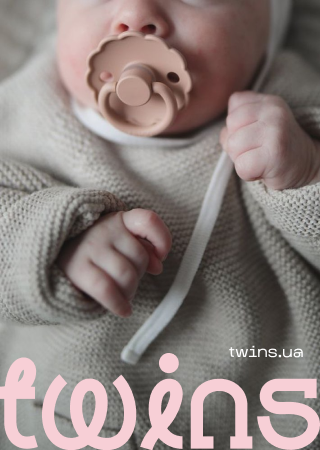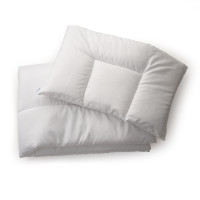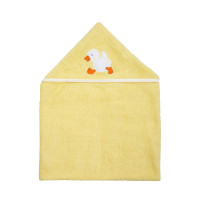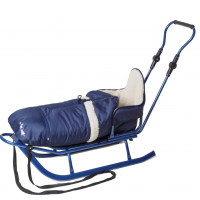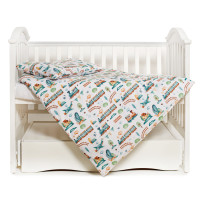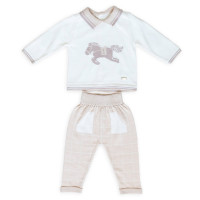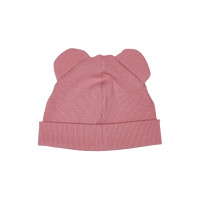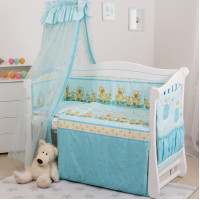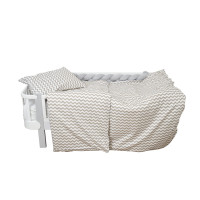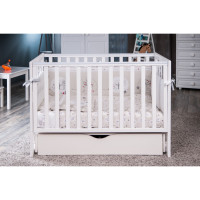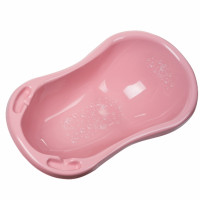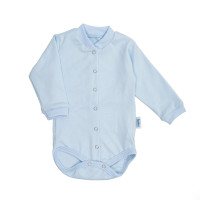Does a baby need a pillow?
Does baby need a pillow? A pillow is an indispensable attribute of a comfortable and pleasant sleep for almost all adults. With the birth of a baby, we begin to think: "Is it comfortable for him to sleep without a pillow? Does a baby need a pillow? & nbsp; When to start putting it to sleep on a pillow? And in general, what should it be, simple or orthopedic?"
Let's hasten to reassure you - you should not hurry with a pillow, especially if your baby is not even a year old yet. Does a baby need a pillow? Young parents should know: according to the unanimous opinion of Russian and foreign doctors, as well as based on simple common sense, the smallest do not need a pillow. Babies up to a year themselves do not express much desire to sleep on pillows, usually their use is the initiative of adults who think: he is uncomfortable! & nbsp; We assure you: comfortable, but just with a pillow - no. No, it's not helpful. In addition to the danger of suffocation, doctors also warn about the risks for the formation of the spine in an infant. In a small child, the head is much larger in proportion than in an adult, so sleeping without a pillow does not cause an overstrain of the cervical spine in the crumbs. Regardless of the sleeping position, the baby's head and neck will lie correctly.
For children under one year old, a flannel diaper folded in four will suffice. It will provide a slight tilt of the body and absorption of moisture (if the baby sweats or burps). There are still exceptions to this rule. These are pillows designed specifically for newborns and babies up to a year old: Reclining pillow. It facilitates breathing and provides protection against regurgitation in children under one year old. The angle of inclination of such a pillow should be no more than 30 degrees. You can achieve a similar effect by simply raising the mattress at the head of the crib a little. If you use an inclined pillow, keep in mind that not only the head, but also the upper body of the child should be located on it. Anatomical (orthopedic) pillow for children from birth to two years old.
Usually, the use of such a pillow is associated with the recommendations of a pediatrician and orthopedist. A special recess and small sides on the sides help to fix the head in the desired position. Doctors recommend using an anatomical pillow for torticollis, displacement of the cervical vertebrae, or for the prevention of skull deformity in the presence of a "favorite" head position in a child. Pillow for protection against suffocation. This modern invention will be a godsend for parents who are worried about the danger of suffocating a newborn with bedding. This pillow is made of breathable polyurethane foam and encased in a cotton cover. The design of the pillow is safe for the baby's spine and is usually marked "0+". Does a baby need a pillow after a year?
Whether a one-year-old child needs a pillow - experts differ here. Some talk about the need for a pillow after a year, others advise to go without it for as long as possible. Where is the truth? It is not necessary to run for a pillow as soon as the baby is one year old. Many orthopedists do not recommend using a pillow for up to one and a half, or even up to two years. & nbsp; And of course, there is no need to insist on the use of a pillow by a child if he slides off it or throws it away in a dream, or, perhaps, simply categorically does not accept a new accessory. & nbsp; A pillow for a 1 year old child has the right to exist, but it must be thin, almost flat, elastic, and not too hard. When does a child need a pillow? Many are interested in the question: at what age does a child need a pillow? As we wrote above, there is no unequivocal answer from experts to this question. Focus on your child. If he does not want to sleep on a pillow for a year, put it off until the baby "ripes". Some children, on the contrary, try to build themselves a pillow from a sheet or blanket to sleep like mom and dad. Take advantage of the moment and get a pillow, but always the right one and suitable for his age. A standard baby pillow can be offered to a child at 2 years old. Until this age, the formation of the main curves of the spine occurs, and by the age of two, the baby will already need support for the cervical region. If we talk about ordinary, adult pillows, they can be used no earlier than the age of a child of 7-8 years. Does my child need an orthopedic pillow? Parents are often concerned about choosing the right pillow for their child, but do not know what criteria to focus on. For babies, an orthopedic pillow, if recommended by a doctor, is the best option, but do older children need them? In this case, the concept of "orthopedic" is not a marketing gimmick, as it often happens, for example, with shoes. A good pillow, made according to the requirements of orthopedic doctors and using quality materials, will be an excellent choice for your child. Orthopedic pillows are also good for adults, because at any age they help prevent problems with the spine.
However, before buying, it is still advisable to consult a specialist (in the case of a baby pillow, this is a pediatrician or orthopedist).[products columns="1" orderby="title" order="ASC" ids="7179, 16867, 16369 , 14152, 19727, 7167, 48158"]
WHAT PILLOW DOES A CHILD NEED?
On which pillow to sleep a child is the choice of parents only. So that you do not get confused in the huge range of modern manufacturers, we note what you need to pay attention to when buying a pillow:
- Material
The fabric of the pillow cover should be made of cotton or linen. The materials used as a filler are usually divided into natural and synthetic. The advantage of natural fillers is good breathability and environmental friendliness, but some of them can cause allergies. Synthetic fillers are good for their durability, but they can cause excessive sweating. Down and feathers are the filler material familiar to us, but for children it is far from the best due to allergenicity and excessive softness. Sheep wool is a natural material that retains temperature well. It stays cool in summer and warm to sleep on in winter. The disadvantage of such a pillow is that the wool quickly clumps. A compromise option may be a pillow made of sheep wool with an admixture of synthetics. In addition, sheep wool is an allergenic material. Hollofiber is a filler loved by many for its elasticity and wear resistance.
But, like all synthetic materials, it does not have the best air removal. Sintepon - pillows with such a filler are one of the cheapest and short-lived. The head of a child on such a pillow will sweat. Comfortel - synthetic fluff with the addition of silicone fiber. Soft, like natural, but at the same time does not cause allergies. Lyocell is an innovative fiber made from wood. The advantage of this filler is the good heat dissipation of natural fillers, while such pillows can be washed, they are hypoallergenic and durable. Buckwheat husk is a material often used for orthopedic pillows. It has a massage effect, memory effect of the position of the head. The downside is the rustling of such a pillow, which can interfere with the child's sleep. Latex is one of the best fillers, hypoallergenic, taking the shape of the head. Such pillows contribute to the correct position in sleep, so they are recommended for use by all orthopedists. Bamboo fiber is a natural material that is durable and does not cause allergies. Heat-sensitive viscoelastic polyurethane foam - dense and rigid. It is used for the production of orthopedic pillows, as it allows the pillow to maintain the anatomical contours of the human head.
- Breathability
This is an important feature both for toddlers, who can roll over and nuzzle the pillow, and for older children, since a pillow with good air permeability will allow the head to “breathe”.
- Elasticity
A traditional pillow should regain its shape when pressed. The softness and looseness of the pillow is the reason why you should refuse to buy it for a child.
- Material Safety
Safety and environmental friendliness are important criteria for choosing a pillow for a child. Moreover, these characteristics should be taken into account both for the cover fabric and for the filler. You should not stop at choosing the cheapest pillow, it is quite possible that harmful dyes were used in its production. If your baby is prone to allergies, choose pillows made from hypoallergenic materials.
- Size and Shape
The traditional children's pillow, pillowcases for which are included in the standard bedding set, has a size of 40 * 60. Orthopedic pillows have other sizes, usually slightly smaller than standard ones. Classification of orthopedic pillows by age: up to 1.5 years: 18x25x2.5 cm from 1.5 to 3 years: 25x29x3 cm from 3 to 7 years: 35x39x5 cm from 7 years: 35x58x8 cm on it the baby will be simply uncomfortable. During sleep, only the head should be on the pillow, but not the shoulders, otherwise the whole point of supporting the cervical spine with the help of a pillow is lost. As for the shape, the pillow should be rectangular. Beautiful decorative pillows in the shape of animals, hearts and letters are an interesting option for decorating a nursery, but they are not suitable for a child's sleep.
- Seam quality
The stitch should be quite frequent, and the threads used to make the seams should be strong.
- The presence of a lightning bolt
The zipper will make it easier to care for the pillow, allowing you to wash only the cover if necessary. In addition, with the help of a “lightning” you can control the amount and condition of the pillow filler.
- Washable
Pillow, like other bedding items, must be washed periodically and endure it, maintaining its size and shape. Choosing a pillow for a child is a very serious matter, since it is it that contributes to the correct position of the head during sleep, and, consequently, the prevention of cerebrovascular accident. On a good pillow, the baby will sleep soundly and with pleasure. We all know that children grow in their sleep, and therefore ensuring a healthy sleep for a child is our important responsibility.
